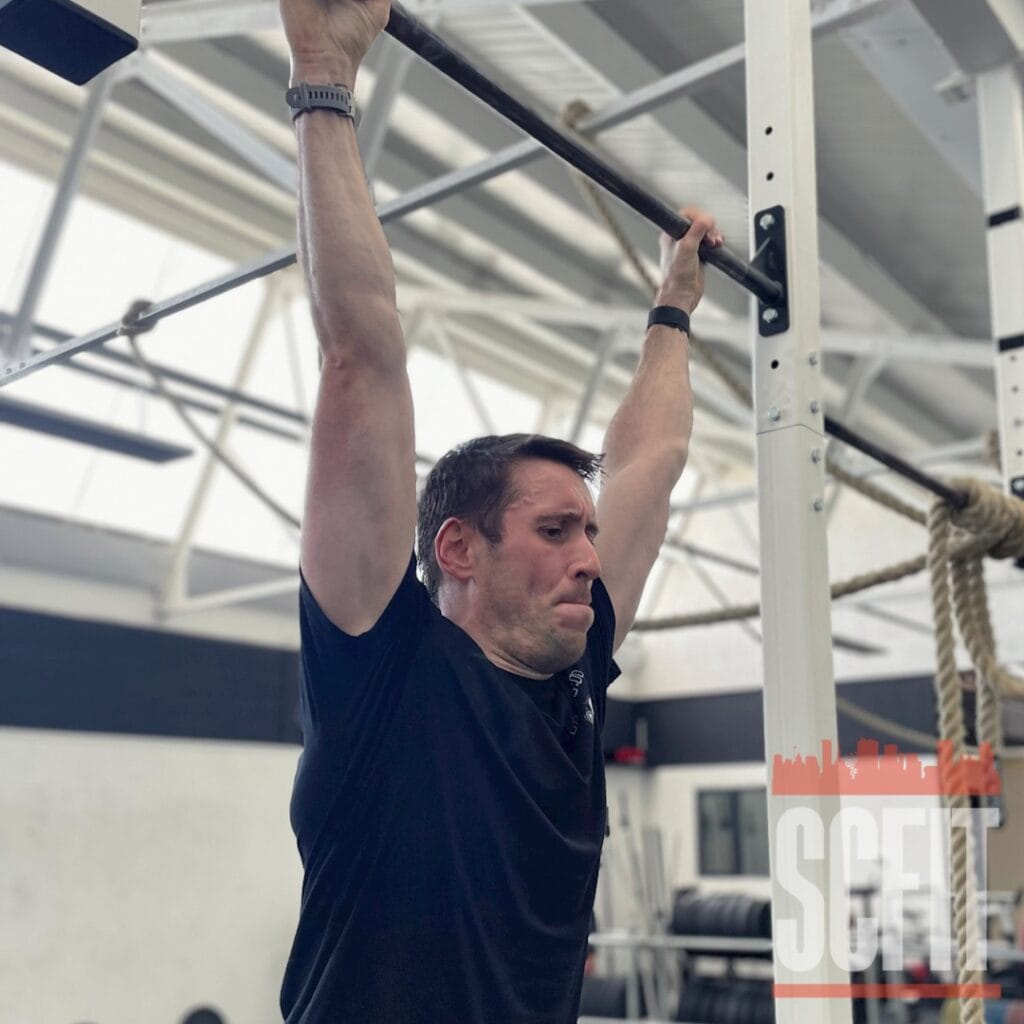Chin Up VS Pull Up: which is better? Why is one easier than the other? Which should you be practicing? … and if the chin up and pull up got into a bar fight, which would win?
Ok, so maybe that last one isn’t a question you might be asking yourself… but the others are common question we regularly hear in the gym. So let’s do a little digging, and provide some answers to these burning questions!

What are the differences?
Let’s start with the difference in set up, and how you go about performing each rep. The most obvious difference is the grip, which is the reason for the other differences which we’ll go on to discover.
1. Grip
Chin Up: Supine Grip
Hold your hands out in front of you, palms up, as if you’re holding a bowl of soup. This is the supine position. If you struggle to remember, think soup -> supine. This is how we hold the bar in a chin up – with hands rotated outwards (externally rotated) with palms facing us.
Pull Up: Prone Grip
Hold your hands out in front of you, palms facing the floor. This is the prone position. Think P for prone, P for pull up. For the pull up we’d hold the bar with hands internally rotated, palms facing away from the body.
2. Width of Grip
Chin Up: Shoulder Width
Typically the optimum position for hands in the chin up is exactly shoulder width. Any wider, and the elbow angle is compromised, which can lead to pain in the elbows. We want our elbows to be in line with the wrists from start to finish.
Pull Up: Just Outside Shoulder Width
Typically the ideal position for hands in the pull up is just outside of shoulder width. Because of the grip positions, the elbows will. Naturally flare outwards, which means that with this slightly wider grip, the elbows will stay in line with the wrists.
3. Muscles Used
As both movement are an upper body pull, the muscles used in the two movements are extremely similar. Both recruit various back, shoulder, arm and core muscles. That being said, there is a stand-out muscular difference that you might notice.
Chin Up: More Bicep
The chin up grip puts you in a position to engage your arms more when pulling. Thinking about the function of the biceps, their primary function is elbow flexion, so the chin up will… you guessed it, use a bit more bicep!
Pull Up: More Lat
With pull ups, because of the pronated hand position, you’ll experience more activation in your lats and less in the biceps, because the biceps are in a less advantageous position to pull your body from the start point.
4. Use and Transferability
So which is better? Probably frustratingly, the answer isn’t a simple one… because it depends!
Often, because of the muscles being used, beginners typically achieve their first chin up before they achieve their first pull up. The lats can be tricky muscles to get working and build up, so it’s not uncommon to even the most experienced gym go-ers to find the chin up easier, or to be able to do more, or perform heavier weighted reps than they could with its pronated counterpart.
Despite the differences in some of the muscles used, there are a whole load of the same ones working hard in both movements, so there’s no doubt that if you have a chin up or two and are working towards your first pull up, practicing those chin ups will help build the strength required for a pull up. If this is you and you feel like you’ve hit a wall, speak to your coach who can recommend other movements and drills to help you work towards that pull up!
In terms of transferability, the pronated grip used in the pull up is seen in other CrossFit gymnastic movements too, from Toes to Bar and Chest to Bar, right through to the Bar Muscle Up. So if some of these movements are on your bucket list, certainly including the pull up (or progressions with the pull up grip, to begin with) in your practice is important. Many barbell movements also use this overhand grip, so there will also be transferability in grip strength and pulling strength there too.
From a functional body building perspective, if you’re looking to target the biceps in your choice of pulling movement, then chin ups will tick that box a little more, so it really does come down to what your goals are and your ‘why’.
Not forgetting…
What’s halfway between pronated grip and supinated grip? Neutral grip! Think of the ring row – our palms are facing each other here… another grip once again!
Takeaway
Movements adopting a range of grips will appear in the SCFIT class programmeming, to ensure you’re working a range fo different muscles and developing a whole spectrum of skills. CrossFit is described as ‘constantly varied’, so the idea of varying grips within movement groups echoes this sentiment, so unless you have a specific reason not to do one of these movements (such as injury etc) we would encourage members to incorporate both the chin up and pull up into their practice. And if you’re not quite there yet? There are plenty of progressions with both prone and supine grip you can work on to build up the strength – from toe-spotted variations, negatives, banded versions and assorted bodyweight and weighted rows – you’re spoilt for choice!
Keen to chat about your goals and how to reach them? Book yourself in for a goal setting meeting or member check-in with the gym manager, by emailing info@secondcityfitness.com. We’d love to hear from you, and are always here to help!
